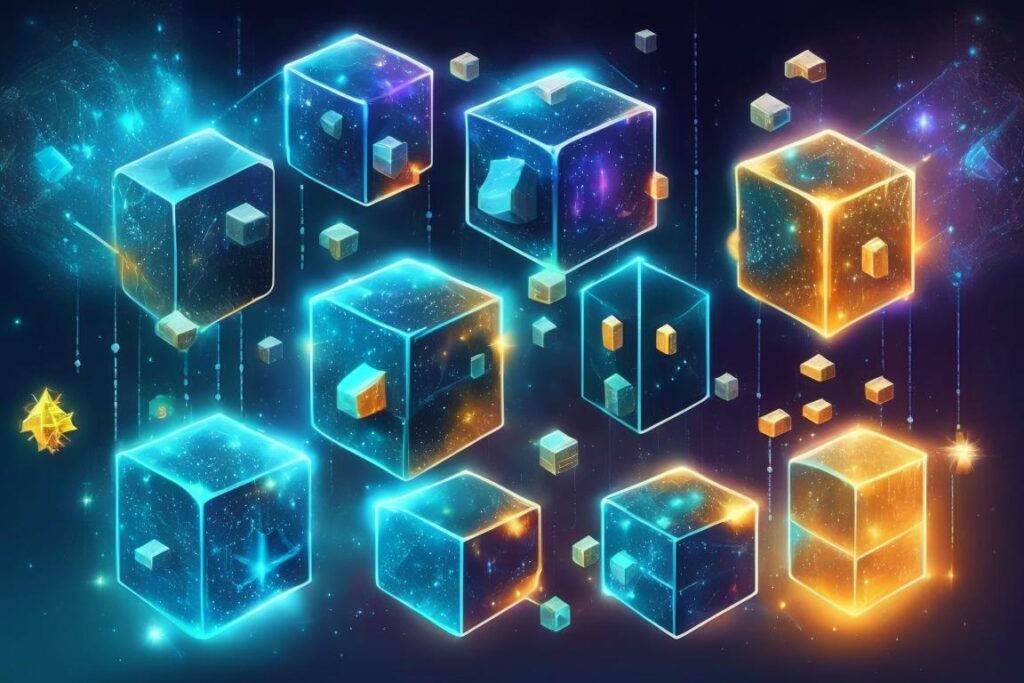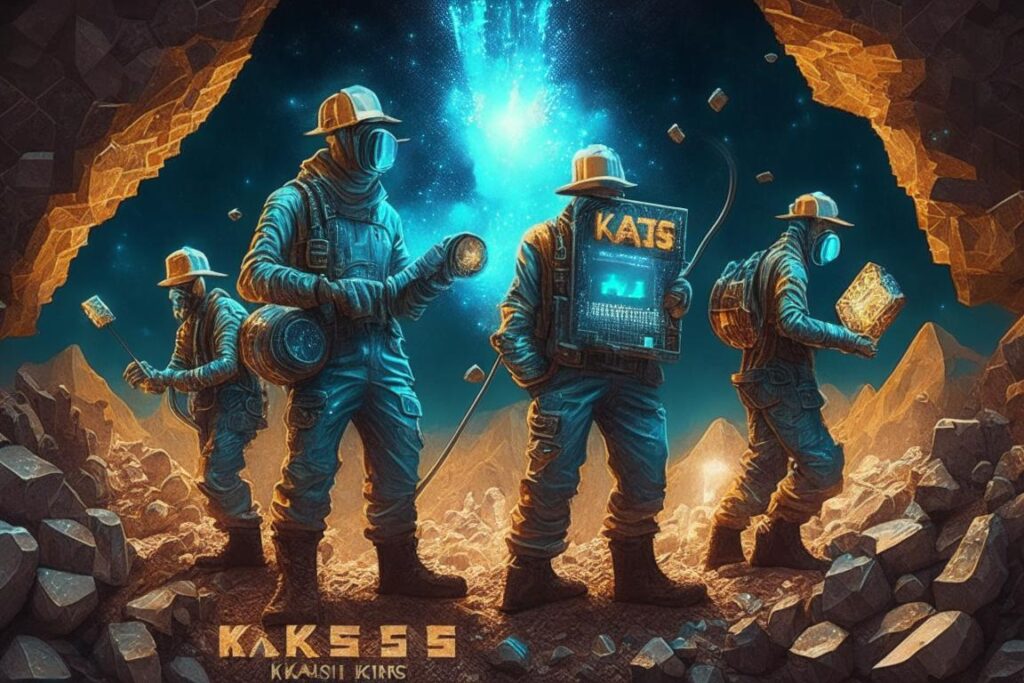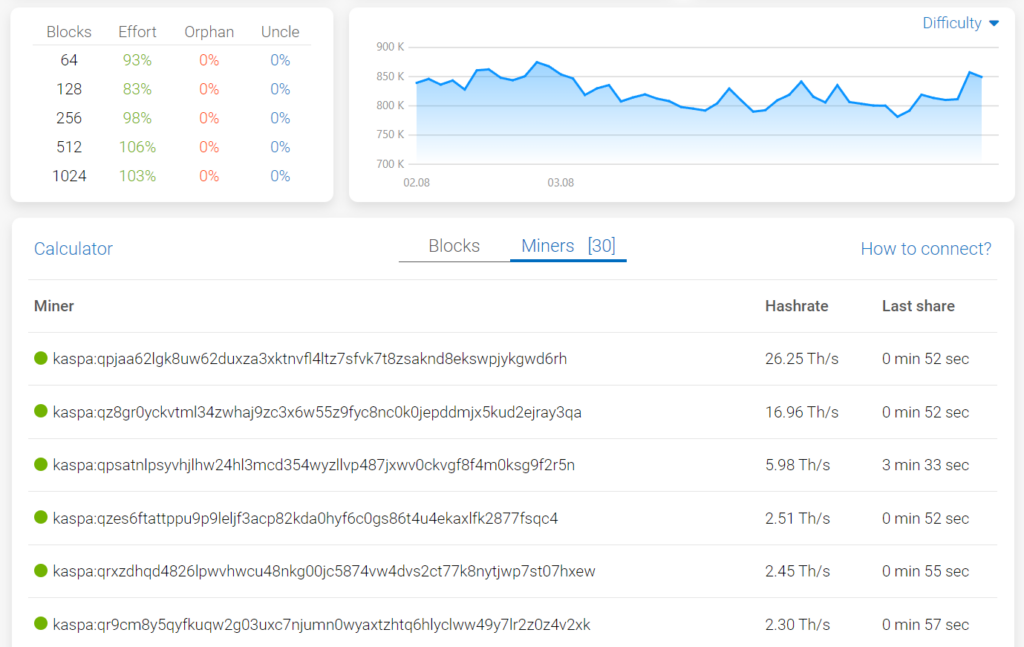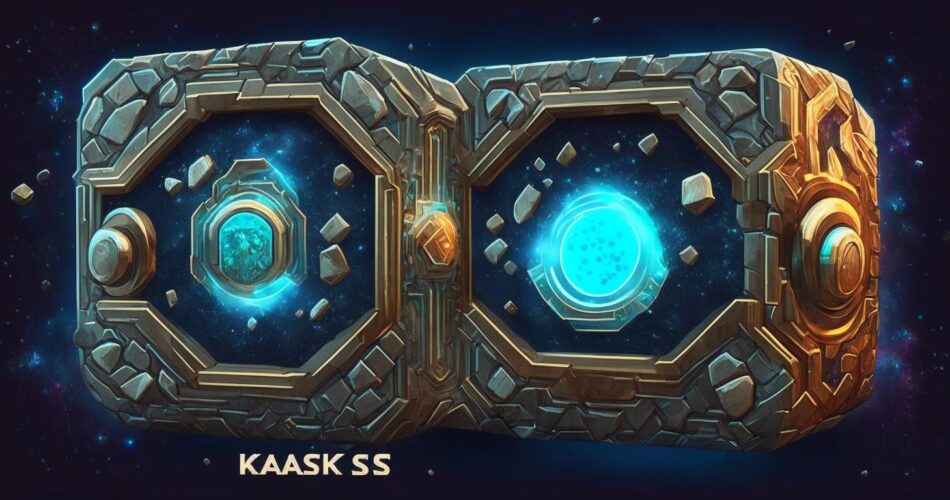In the ever-evolving landscape of cryptocurrencies, the Kaspa coin stands out as a promising contender. One of the key aspects that make it unique is its block reward system, a concept that is central to the functioning of cryptocurrencies. Understanding the Kaspa block reward is crucial for miners and investors alike, as it provides insights into the potential profitability and long-term sustainability of the coin. Notably, Kaspa is now mined using ASIC (Application-Specific Integrated Circuit) miners, which are specifically designed for mining cryptocurrencies, offering a more efficient and powerful solution for miners.
Current Kaspa Block Reward
Table of Contents
Understanding Cryptocurrency Block Rewards

What are Block Rewards?
Block rewards are a fundamental part of the cryptocurrency ecosystem. They serve as an incentive for miners who validate transactions and add new blocks to the blockchain. Essentially, a block reward is the number of cryptocurrency coins miners receive when they successfully mine a block.
The Role of Block Rewards in Cryptocurrency Mining
Block rewards play a crucial role in cryptocurrency mining. They incentivize miners to contribute their computational power to the network, which is necessary for maintaining the blockchain’s integrity and security.
The Kaspa Coin Emission Schedule
The Kaspa coin emission schedule is a predetermined timeline that outlines the rate at which new Kaspa coins are created and distributed as block rewards. This schedule is publicly available and provides transparency about the coin’s supply over time.
PreDeflationary
| Phase | Total Mined | Total per Month | Block Reward | Date |
|---|---|---|---|---|
| 1 | 0 | 1,314,900,000 | 500 | 11/8/2021 |
| 2 | 1,314,900,000 | 1,314,900,000 | 500 | 12/8/2021 |
| 3 | 2,629,800,000 | 1,314,900,000 | 500 | 1/8/2022 |
| 4 | 3,944,700,000 | 1,314,900,000 | 500 | 2/8/2022 |
| 5 | 5,259,600,000 | 1,314,900,000 | 500 | 3/8/2022 |
| 6 | 6,574,500,000 | 1,314,900,000 | 500 | 4/8/2022 |
1st Year Chromatic Phase (5/8/2022 – 4/7/2023)
| Phase | Total Mined | Total per Month | Block Reward | Date |
|---|---|---|---|---|
| 7 | 7,889,400,000 | 1,157,112,000 | 440 | 5/8/2022 |
| 8 | 9,046,512,000 | 1,092,168,294 | 415.3046976 | 6/7/2022 |
| 9 | 10,138,680,294 | 1,030,869,598 | 391.995436 | 7/7/2022 |
| 10 | 11,169,549,891 | 973,011,333 | 369.9944227 | 8/7/2022 |
| 11 | 12,142,561,224 | 918,400,403 | 349.2282314 | 9/6/2022 |
| 12 | 13,060,961,627 | 866,854,549 | 329.6275569 | 10/7/2022 |
| 13 | 13,927,816,176 | 818,201,742 | 311.1269837 | 11/6/2022 |
| 14 | 14,746,017,918 | 772,279,607 | 293.6647679 | 12/7/2022 |
| 15 | 15,518,297,525 | 728,934,883 | 277.182631 | 1/6/2023 |
| 16 | 16,247,232,408 | 688,022,912 | 261.6255653 | 2/5/2023 |
| 17 | 16,935,255,319 | 649,407,153 | 246.9416506 | 3/8/2023 |
| 18 | 17,584,662,472 | 612,958,730 | 233.0818808 | 4/7/2023 |
2nd Year Chromatic Phase (5/8/2023-4/7/2024)
| Phase | Total Mined | Total per Month | Block Reward | Date |
|---|---|---|---|---|
| 19 | 18,197,621,202 | 578,556,000 | 220 | 5/8/2023 |
| 20 | 18,776,177,202 | 546,084,147 | 207.6523488 | 6/7/2023 |
| 21 | 19,322,261,349 | 515,434,799 | 195.997718 | 7/8/2023 |
| 22 | 19,837,696,148 | 486,505,666 | 184.9972114 | 8/7/2023 |
| 23 | 20,324,201,814 | 459,200,202 | 174.6141157 | 9/7/2023 |
| 24 | 20,783,402,016 | 433,427,275 | 164.8137785 | 10/7/2023 |
| 25 | 21,216,829,290 | 409,100,871 | 155.5634919 | 11/6/2023 |
| 26 | 21,625,930,161 | 386,139,803 | 146.832384 | 12/7/2023 |
| 27 | 22,012,069,965 | 364,467,441 | 138.5913155 | 1/6/2024 |
| 28 | 22,376,537,406 | 344,011,456 | 130.8127827 | 2/6/2024 |
| 29 | 22,720,548,862 | 324,703,576 | 123.4708253 | 3/7/2024 |
| 30 | 23,045,252,438 | 306,479,365 | 116.5409404 | 4/7/2024 |
The Kaspa Block Reward System

The Kaspa block reward system is designed to decrease over time, which is a common practice in many cryptocurrencies to control the supply of coins. This system ensures that the total supply of Kaspa coins will not exceed a certain limit, preserving the value of the coins over time.
The Impact of Kaspa Block Rewards on Miners
Block rewards are the primary source of income for cryptocurrency miners. They serve as an incentive for miners to contribute their computational power to the network. The Kaspa block reward system, with its unique structure, has a significant impact on miners in several ways.
Miner Profitability
The profitability of mining Kaspa is directly tied to the block reward. When a miner successfully mines a block, they receive a certain number of Kaspa coins as a reward. The higher the block reward, the more profitable it is to mine. However, the Kaspa block reward system is designed to decrease over time. This means that, all else being equal, mining Kaspa will become less profitable over time as the block reward decreases.
Mining Difficulty and Competition

The block reward can also influence the difficulty of mining and the level of competition among miners. When the block reward is high, more miners are incentivized to join the network, increasing competition. As the block reward decreases, some miners may find it no longer profitable to mine, especially those with higher operational costs. This could potentially reduce the level of competition, but it could also lead to a higher concentration of mining power among fewer participants.
Network Security
Miners play a crucial role in maintaining the security of the Kaspa network. They validate transactions and add them to the blockchain, preventing double-spending and other types of fraud. The block reward incentivizes miners to perform this function. However, as the block reward decreases, there could be concerns about the network’s security. If too many miners leave the network because it’s no longer profitable to mine, the network could become more vulnerable to attacks.
Sustainability of Mining
The decreasing block reward system of Kaspa is designed to control the supply of coins and ensure the long-term sustainability of the coin. While this might mean reduced profits for miners in the short term, it could lead to increased value of the Kaspa coins in the long term if demand continues to grow. This could potentially offset the reduced block rewards for miners and ensure the long-term sustainability of mining.
Future Projections for Kaspa Block Rewards
The future of Kaspa block rewards is outlined in the Kaspa coin emission schedule, which provides a transparent roadmap of how the block reward will change over time. Here’s what we can expect based on the current emission schedule:
Decreasing Block Rewards
The Kaspa block reward system is designed to decrease over time. This is a common practice in many cryptocurrencies to control the supply of coins and prevent inflation. According to the emission schedule, the block reward will continue to decrease in the coming years. This means that miners will receive fewer Kaspa coins for each block they mine in the future compared to now.
Impact on Miner Profitability
As the block reward decreases, mining Kaspa could become less profitable, especially for miners with higher operational costs. However, this doesn’t necessarily mean that mining Kaspa won’t be profitable. The profitability of mining also depends on other factors, such as the price of Kaspa, the efficiency of mining equipment, and the cost of electricity. If the price of Kaspa increases in the future, it could offset the reduced block rewards.
Potential for Increased Coin Value
The decreasing block reward system could potentially lead to an increase in the value of Kaspa coins. As the supply of new coins decreases, if the demand for Kaspa continues to grow, it could create upward pressure on the price. This is based on the basic economic principle of supply and demand: when supply decreases and demand remains constant or increases, prices tend to rise.
Long-Term Sustainability
The decreasing block reward system is designed to ensure the long-term sustainability of Kaspa. By controlling the supply of new coins, it helps to prevent inflation and preserve the value of the coins. This could make Kaspa more attractive to investors and users in the long term, which could further increase the demand and price of Kaspa.
Conclusion
The Kaspa block reward system is a fundamental aspect of the Kaspa cryptocurrency, influencing everything from the profitability of mining to the long-term sustainability of the coin. As we’ve explored in this article, understanding this system is crucial for anyone involved in or considering mining Kaspa.
The block reward system, with its decreasing structure, presents both opportunities and challenges. On one hand, it ensures the controlled supply of Kaspa coins, potentially leading to increased value over time and long-term sustainability. On the other hand, it could impact the profitability of mining, especially for those with higher operational costs.
Moreover, the block reward system plays a crucial role in maintaining the security of the Kaspa network. It incentivizes miners to contribute their computational power to the network, validating transactions and preventing fraud. As the block reward decreases, it will be important to monitor the impact on the network’s security.
Looking ahead, the future of Kaspa block rewards is outlined in the emission schedule. While it projects a decrease in block rewards, the actual impact will depend on various factors, including the price of Kaspa, the efficiency of mining equipment, and market demand.
In conclusion, the Kaspa block reward system is a complex and dynamic aspect of the Kaspa cryptocurrency. Whether you’re a miner, investor, or simply a crypto enthusiast, understanding this system will be key to navigating the future of this promising cryptocurrency. As the crypto landscape continues to evolve, staying informed and adaptable will be more important than ever.
FAQs
What is the Kaspa block reward?
The Kaspa block reward refers to the number of Kaspa coins that miners receive as a reward for successfully mining a block. This reward serves as an incentive for miners to contribute their computational power to the network. The Kaspa block reward is designed to decrease over time, according to the Kaspa coin emission schedule.
How does the Kaspa block reward system work?
The Kaspa block reward system works by rewarding miners with a certain number of Kaspa coins for each block they mine. The number of coins they receive – the block reward – decreases over time, as outlined in the Kaspa coin emission schedule. This decreasing structure is designed to control the supply of Kaspa coins and prevent inflation.
What is the future projection for Kaspa block rewards?
The future of Kaspa block rewards is outlined in the Kaspa coin emission schedule. According to this schedule, the block reward will continue to decrease in the coming years. This means that miners will receive fewer Kaspa coins for each block they mine in the future compared to now. However, the actual impact on miner profitability will depend on various factors, including the price of Kaspa, the efficiency of mining equipment, and market demand.
How does the Kaspa block reward impact miners?
The Kaspa block reward has a significant impact on miners. It directly influences their profitability, as the block reward is their primary source of income. As the block reward decreases, mining Kaspa could become less profitable, especially for miners with higher operational costs. However, the block reward also incentivizes miners to contribute their computational power to the network, which is necessary for maintaining the network’s security.
How does the Kaspa block reward contribute to the long-term sustainability of the coin?
The decreasing block reward system contributes to the long-term sustainability of Kaspa by controlling the supply of new coins. This helps to prevent inflation and preserve the value of the coins. If the demand for Kaspa continues to grow, the decreasing supply of new coins could create upward pressure on the price, potentially leading to increased value over time. This could make Kaspa more attractive to investors and users in the long term.


